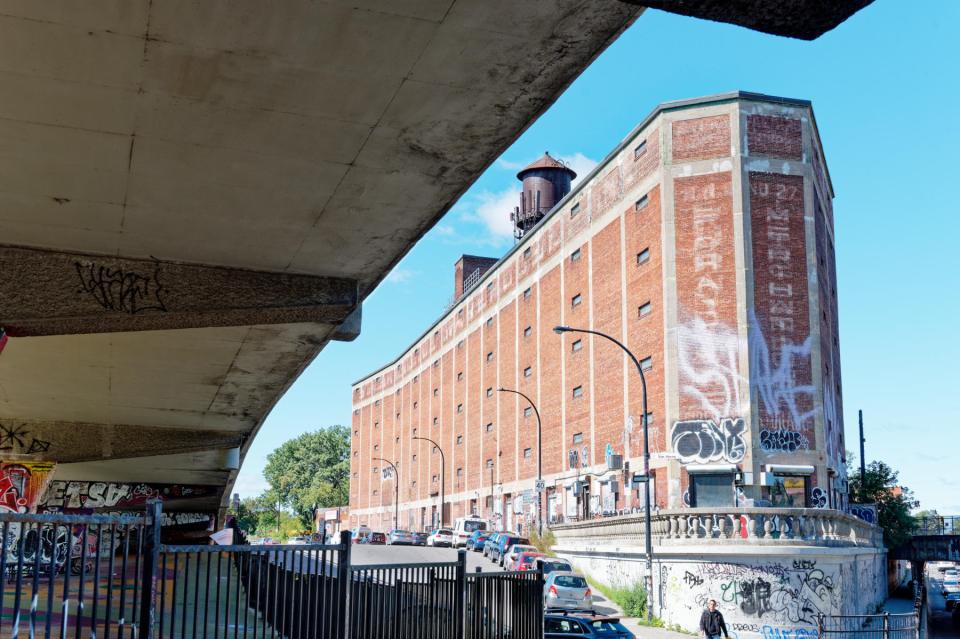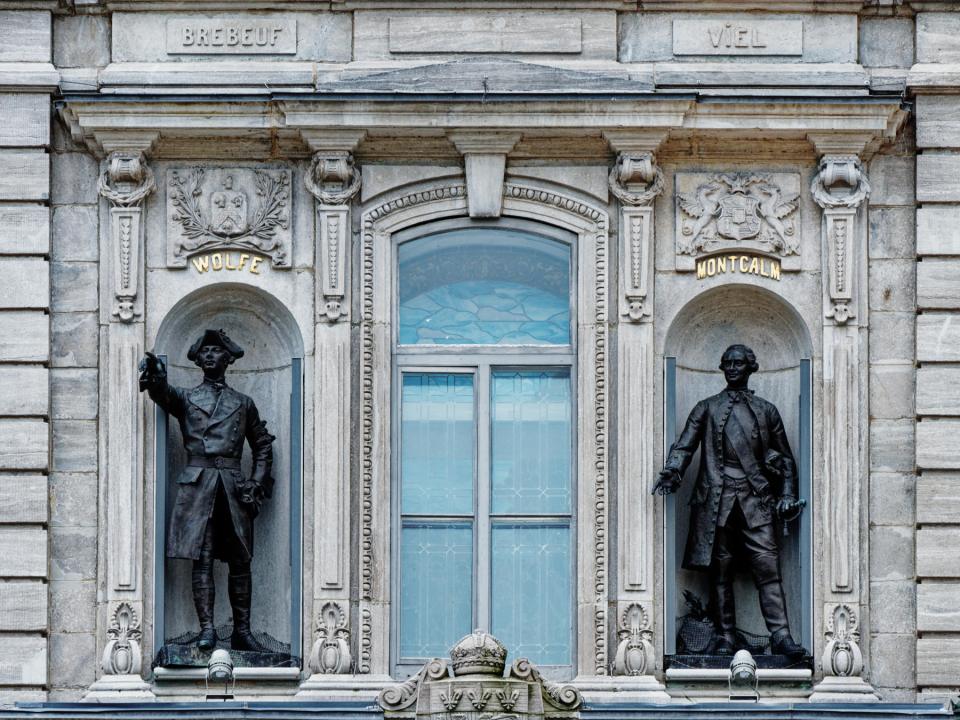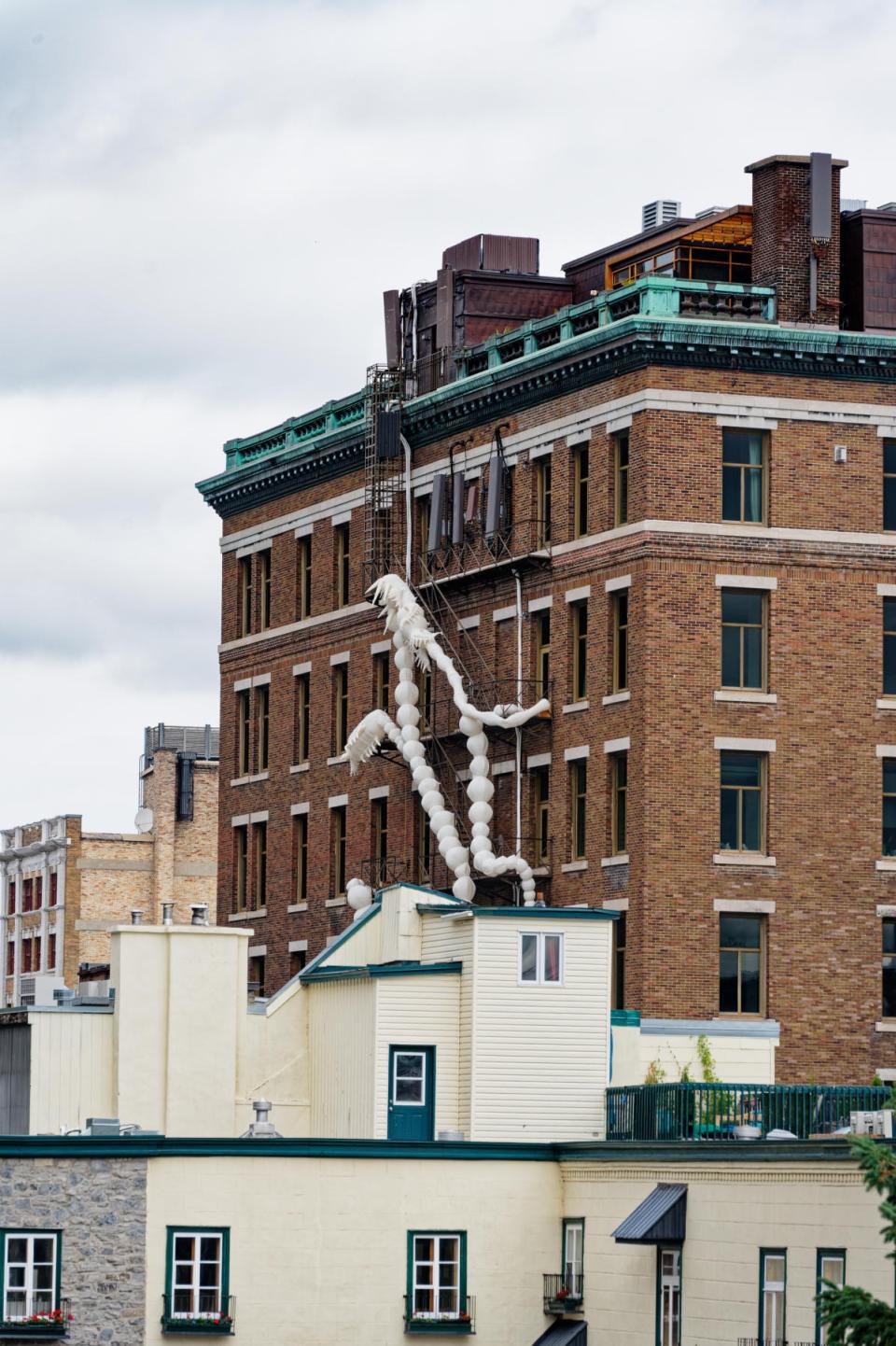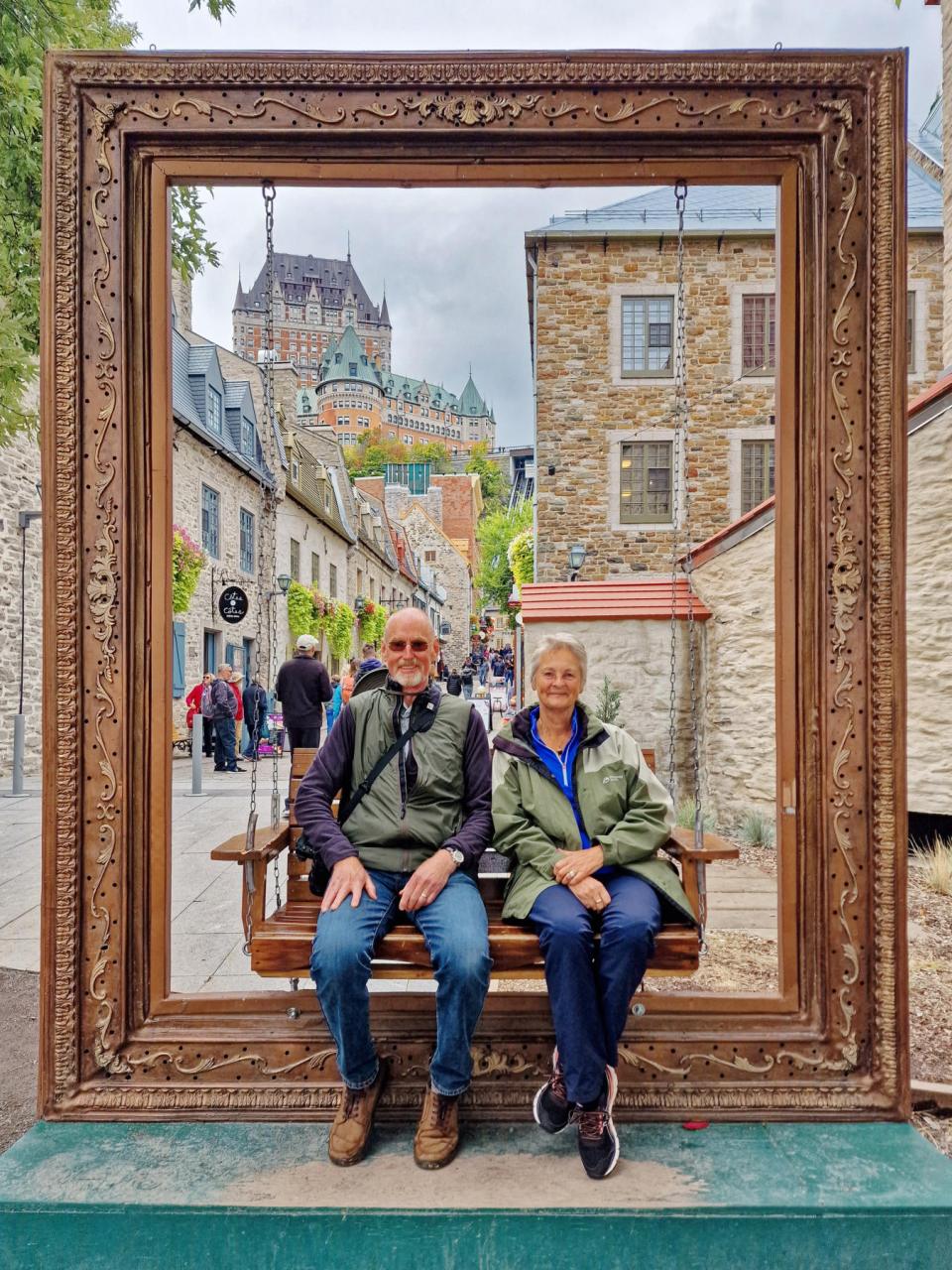Friday 23 September 2022 – For our first full day of exploring Montréal, we settled on two aspects we wanted to prioritise. Neither of them was particularly likely to be in evidence near our hotel, and walking to them would have taken too much time, so we decided to use the Metro to get us about. Apart from anything else, we both feel that using public transport in a strange place gives one a greater feeling of connection with it; Montréal is really the first place on our long trip through Canada where using it has made sense, so we were glad to take the opportunity.
The hotel is connected to RÉSO, as is the nearest metro station and it only took a small amount of blundering about to enable us to find it. We bought 3-day passes, which would give us unlimited use of the system whilst we were here. I tried to use the transaction to split a 50-dollar note, as we were running short of smaller denominations, only to be told that the transaction was card only – something I suspect is true in many places across the city now.
The Metro here is not a particularly intricate network – just three lines – but the Orange line suited our needs. I am quite impressed with what we’ve seen of the Metro. It’s clean, reasonably frequent and has modern trains which run, like many Paris Metro trains, on rubber tyres. There are some nice design points in the way it operates, too.
Station announcements are clear, lights tell you which side to disembark, and they also warn you when the doors are about to close by turning red. There’s a mobile signal throughout and altogether it seems a very good system.
Acting on recommendations from the esteemed Ian Burley, we aimed for Jean Talon, which features a well-established market. The area is well out into the suburbs and does have the same air as some of the (nicer) banlieus of Paris.

The market is very substantial, and looks like a typical sort of market you find in France,



with lots of wonderful-looking fresh produce, meats and cheeses. There is a considerable variety of some things,


such as these varieties and colours of aubergines and cauliflowers, the like of which I’d never seen before.
On the way to the market, we saw examples of one of the two aspects of the city we were keen to explore – street art.

Some items are very obviously formal works of art. Others are more difficult to distinguish from upmarket graffiti.

The city staged a festival of street art for 2022, and Jane had found a website which gave an idea of where to find some examples that were part of this festival, as well as some pieces that have been in place for longer. And we found lots and lots of examples, one or two of which I’ll share in a moment – just be patient. But, after leaving the market, we also came across the other aspect that we (Jane, particularly) wanted to see: outdoor staircases.

The city has a phenomenon called a “plex” – a building with apartments stacked on top of each other. In many cases, external staircases are used to reach the upper ones. The basic reason for this is to save space on internal staircases. There’s an interesting article giving more detail here.
We reached a section of the city called Little Italy,

no, really,


and found that these external staircases can be found in profusion here. So I got my camera out and Took Steps:



The (mostly ironwork) staircases look interesting and artistic on a nice sunny day such as this one; what they must be like to use in the ice and snow of a Montréal winter I dread to think…
Our route towards more examples of street art was the Boulevard St. Laurent, which is a busy and quite crowded main road. One block to the side of it, though, is Clark Street, which is much quieter and more pleasant, and also contains many examples of these external staircases.

It also has a segregated cycle path along much of its run through Little Italy, which makes stepping off the pavement unwise without checking carefully in both directions. Here are a couple more instances of these interesting cultural oddities.


Even the less attractive ones are interesting to look at.
We also saw a few other oddities as we walked along: what seems to me a risky way of exercising dogs;

A Catholic church with an unusual architecture, offering services in Polish, Italian and English (only open on Sundays, so sadly we couldn’t peek inside)

and the absolutely massive building which once housed the Canadian Warehouse Company.

But now: the street art. There is a lot of it – it’s A Thing in Montréal, much more than anywhere else we’ve visited in Canada. There are all sorts: grotesque;

abstract;

advertising the business;


fantasy;

fanciful;

flashy;

and unfathomable.

Sharing all the photos I took here would be too cumbersome, so I have created a Flickr Album with 44 examples, if you’re interested to see more.
The one thing that we noted about every single piece of street art we saw was that they were all, every single one, defaced by graffiti, which I found very saddening. In fact, there was graffiti everywhere we looked and its utter ubiquity leaves me with a less than favourable impression of the city. Sure, every city has its graffiti, but there’s so much here that it renders even the attractive bits ugly in my view.
In the midst of all of this (vandalised) street art, we discovered we were (a) hungry and (b) near a deli recommended by the indefatigable Ian Burley – Schwartz’s Hebrew Delicatessen, famous for its smoked meats. So famous, in fact, that it has its own Wikipedia entry. And so famous that the queue to eat in the restaurant is, well, quite famous.

Jane spotted that there’s a take-out section,. The queue in there was quite substantial, but very fast-moving.

We got a Smoked Meat Sandwich each, (with a pickle, already!), and actually scored seats at the very back of the shop; I can report that their pastrami is delicious, but you really must make sure to have napkins or tissues to hand, as the portions are vast and tend to leak everywhere.
Clark Street actually runs all the way into the city, and is much preferable to walk along compared to St. Laurent. It also has some really interesting houses along it.


On the other side of St. Laurent to Clark Street there is a square called St. Louis,

which is also surrounded by some really individual properties.


As you get towards the city, having passed through Little Italy and Little Portugal

you reach Chinatown, which is quite small, but has four gates. This is the main one (through which you can just see the far gate)

and then, before you know it, you’re by the Old Town, and in our case, near the Basilica Notre Dame, Like almost everywhere, it was under maintenance –


I guess when you have winters like they have here, you have only a limited window in which to get things fixed, but another thing I found oppressive was the ubiquity of roadworks and other construction projects going on.
Anyhoo.
We went inside. It’s quite a sight.







It’s another telling example of the opulence of Catholic churches as opposed to the more austere Protestant approach to worship.
You’d have thought we’d have had enough by now, but no – we were near the Old Port and there was The Wheel.

You can’t see something like that on a sunny day and not want to ride round it, can you? So that’s what we did. To be candid, there are so many reflections once you’re in a cabin that photography can be quite unrewarding, but we managed a couple of reasonable photos between us as we went round.






The last one of these, the “galleon”, we subsequently found out, is set up as a kids’ adventure playground, with all sorts of places to climb around; a nice idea.
And that really was it for the day. We headed back to the nearest Metro station and thence to the hotel for a much needed glass of something cold before retiring for the evening. The day was long but interesting, with many charming aspects of Montréal to balance against its ineffable scruffiness. We have one more full day here; who knows what we shall do with it? I’m pretty sure Jane Has A Plan… come back and find out, eh?













































































